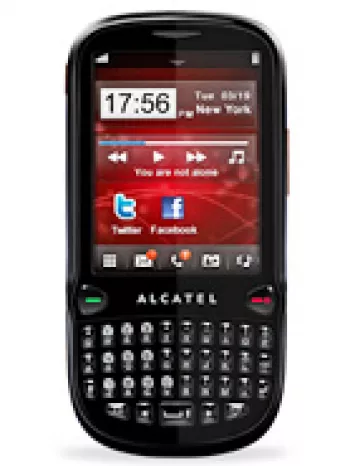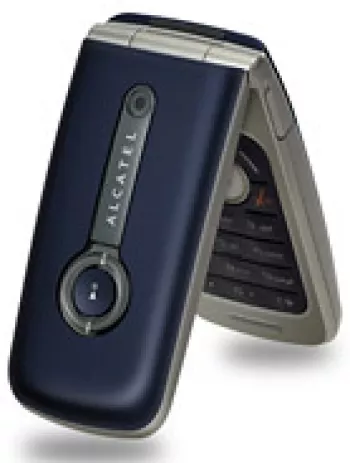
Introduction to Alcatel OT-888
The Alcatel OT-888, released in the second quarter of 2011, was a feature phone that marked its prominence during a period dominated by more rudimentary mobile devices. This phone, with its distinctive design and functional features, catered to a segment of users who appreciated both physical keyboards and touchscreen interfaces. With a combination of technology and design, the OT-888 provides an intriguing look back at the evolution of mobile technology.
Design and Build
The Alcatel OT-888 features a robust and somewhat bulky chassis that weighs 146 grams. Its dimensions of 114 x 56.2 x 14.9 mm give it a compact yet substantial presence in hand. The phone sports a QWERTY keyboard, a feature that was particularly valued by users who preferred tactile feedback while typing. It uses a Mini-SIM card and comes in several color variations, including Bluish black, Aubergine, Acid green, and Orange, allowing for some personalization.
Display
This device comes equipped with a 3.2-inch TFT resistive touchscreen display, offering 256K colors. The screen resolution is 240 x 400 pixels, resulting in a pixel density of approximately 146 ppi. While this may not compare to modern smartphone displays, at the time, it delivered a decent visual experience suitable for basic multimedia and communication tasks.
Camera
The Alcatel OT-888 features a 2 MP primary camera. While it may not cater to professional photography needs, it was more than adequate for casual snapshots and day-to-day photography. The camera also supports video recording, providing some versatility for capturing moments. However, it does not offer a front-facing camera, aligning with the typical design of feature phones of its time.
Performance and Software
Under the hood, the Alcatel OT-888 is powered by a 208 MHz CPU. Although modest by modern standards, this processor was sufficient for handling the tasks of a feature phone, such as calling, texting, and running basic applications. The phone operates on a proprietary feature phone OS, which is designed to optimize performance for fundamental functions while offering essential features for connectivity and media consumption.
Memory and Storage
With 50MB of internal storage, the Alcatel OT-888 provides basic storage capacity for contacts, messages, and limited multimedia content. The device supports microSDHC cards, allowing users to expand their storage capacity, making it possible to store more music, photos, and applications. The phonebook supports practically unlimited entries, a convenience for users who need to manage extensive contact lists.
Connectivity
The Alcatel OT-888 supports GSM technology with 2G bands operating on GSM 850/900/1800/1900. It provides connectivity options such as Bluetooth 2.1 with A2DP, ensuring compatibility with wireless audio devices. It lacks Wi-Fi capabilities, which was standard for feature phones of that era. For wired connectivity, the phone includes a microUSB 2.0 port for charging and data transfer.
Battery Life
The device is powered by a removable Li-Ion 850 mAh battery. Despite its modest capacity, the battery efficiently supports up to 600 hours of standby time and up to 9 hours of talk time. Music enthusiasts can enjoy up to 20 hours of continuous play, a testament to the device's efficiency in managing power consumption, even without the advanced energy-saving functionalities present in modern smartphones.
Additional Features
Designed to offer a comprehensive package, the Alcatel OT-888 incorporates several additional features to enhance user convenience and entertainment. These include a stereo FM radio with RDS for enjoying live broadcasts, a 3.5mm headphone jack for audio output, and Java support for running Java-based applications. The phone's messaging capabilities extend to SMS, MMS, Email, Push Email, and IM, providing a broad array of communication options.
Market Reception and Legacy
In the era of its release, the Alcatel OT-888 found its market among users looking for a cost-effective device with essential communication and multimedia capabilities. It catered specifically to those who valued the tactile feel of a physical keyboard paired with the novelty of a resistive touchscreen. Although considered discontinued and replaced by more advanced smartphones, the OT-888 remains a significant reminder of the transitional phase in mobile phone technology from feature phones to the more sophisticated smartphones we use today.
Conclusion
While the Alcatel OT-888 may no longer be in production, its design and technology continue to be reflected upon as an emblem of an era where feature phones were mainstream. It effectively bridged the gap between traditional mobile phones and modern touchscreen devices, offering users a blend of functionality, design, and performance suited to the needs of its time. As we look back, the OT-888 serves as a snapshot of mobile technology's journey, highlighting significant milestones in its evolution.
Main Features of Alcatel OT-888
- GSM Technology with 2G support
- QWERTY Keyboard for easy typing
- 3.2-inch TFT resistive touchscreen with 256K colors
- Expandable memory via microSDHC card slot
- 2 MP main camera with video capability
- Comprehensive phonebook and call records storage
- Bluetooth 2.1 with A2DP for wireless connectivity
- Stereo FM radio with RDS support
- microUSB 2.0 for connectivity
- Removable Li-Ion 850 mAh battery
- Offered in multiple colors: Bluish black, Aubergine, Acid green, Orange
Drawbacks of Alcatel OT-888
- Limited to 2G GSM technology, which may be insufficient for modern data needs.
- Discontinued model, leading to potential difficulties in acquiring parts or support.
- Uses a resistive touchscreen, which can be less responsive compared to capacitive touch technology.
- Low screen resolution of 240 x 400 pixels with a poor pixel density (~146 ppi).
- Very modest CPU performance with a 208 MHz processor, inadequate for multitasking or modern apps.
- Limited internal storage of 50MB, requiring reliance on external microSDHC card for additional space.
- No front-facing selfie camera, affecting video calls and selfie photography.
- No Wi-Fi connectivity, limiting internet access to mobile data only.
- No GPS, impacting location-based services.
- Lacks advanced sensors that are common in newer devices.


View Also
More Phones
All Rights Reserved +14268 Phones © Mobilawy 2025

























